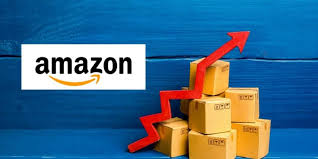
Keeping products in your warehouse can be expensive, especially if you own a small business or beginner. Although, it is possible to sell items on Amazon without having to keep inventory.
7. Steps How to sell on Amazon without Inventory
1. Understand Drop-shipping on Amazon
In the drop-shipping business model where you act as a middleman between customers and suppliers. Instead of purchasing products or having inventory, firstly you list items on Amazon and when a customer places an order, you ship the order to your supplier.
The supplier then ships the products directly to the customer. This method allows you to avoid having to store or handle physical inventory.
Steps to drop shipping:
Set up an Amazon seller account: Choose a “Personal” or “Professional” plan depending on your expected sales volume.
Find reliable suppliers: By using platforms like AliExpress, eBay, or local wholesalers that offer drop shipping services.
List products on Amazon: Add product listings based on your supplier’s catalog and optimize them with competitive prices and SEO-friendly descriptions.
Handle customer service: As a seller, you are responsible for customer communication, although the supplier fulfills the orders.
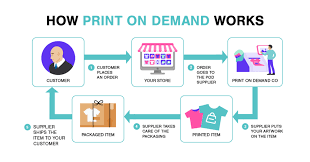
2. Explore Print-on-Demand Options
Print on Demand is another method where you sell custom designed products like t-shirts, mugs, and phone cases. Companies like Print-ful and Printery handle the printing and shipping once you place an order.
Steps for Print on Demand:
Create a design: Use that design tools like Canva or Adobe Illustrator to create unique product designs.
Integration: Use services like Merch by Amazon or third-party integrations to list POD items on Amazon.
Products marketing: For taking advantage of Amazon advertising tools to reach more customers.
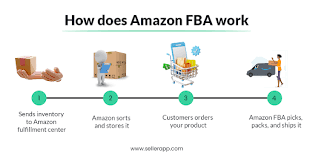
3. Consider Using Fulfillment by Amazon (FBA)
Fulfilled by Amazon (FBA) typically requires inventory. Some sellers use the service in conjunction with drop shipping.This includes:
- Using a drop shipping supplier to ship small quantities of products to Amazon’s warehouse.
- Amazon handles order fulfillment and customer service, providing a hybrid approach
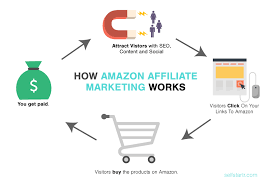
4. Amazon Affiliate Marketing Use
Amazon Affiliate Program refer to completely inventory free model for you. Here, you can earn commissions by promoting Amazon products through unique affiliate links. This is ideal for bloggers, social media influencers, or content creators.
Steps for Affiliate Marketing:
- Sign Up for Amazon Associates: Get approved as an affiliate.
- Promote Products: Use your website, blog, or social media to recommend products and share links.
- Commissions: Earn a percentage of sales when customers purchase through your links.
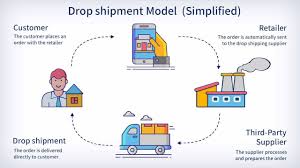
7.Manage Drop-shipping Orders
How to manage orders for drop-shipping here are some key steps- The customer places an order on Amazon.
- The seller sends the order to the supplier, and provides the customer’s shipping address.
- The supplier processes the order and goes to packaging. They then ship the products directly to the customer.
- The seller receives tracking information and sees when the product is delivered directly to the customer’s doorstep.
- But always remember that your biggest responsibility is to handle any customer inquiries, perform client support, keep them updated on the status of their order, and take care of any potential returns or exchanges.
Pros and Cons of Amazon Drop-shipping
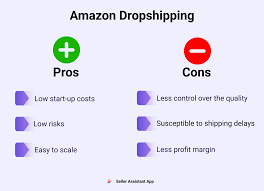
Pros of Amazon Drop-shipping
- Low startup costs as no inventory or storage is required.
- Suppliers handle inventory management, packaging, and shipping.
- Flexibility to sell a wide range of products and test different niches.
- Easily scalable by adding more products or suppliers.
- Location freedom, enabling you to work from anywhere.
- Access to Amazon’s massive customer base and traffic.
- Potential for automation with the right tools and suppliers.
Cons of Amazon Drop-shipping
- Strict Amazon drop shipping policies with risk of account suspension.
- Dependence on suppliers for stock availability and shipping reliability.
- Lack of control over product quality and inventory.
- Responsibility for customer service, returns and complaints.
- High competition, leading to market saturation.
- Amazon fees can significantly reduce profit margins.
- Limited branding opportunities with supplier-handled packaging.
- Risk of Amazon policy changes that impact the business model.
Conclusion
Selling on Amazon without buying inventory is possible and can be quite profitable for any type of seller. Drop shipping offers many benefits, including cost-effectiveness, reduced financial risk, and greater flexibility. In this article, we’ve covered how to sell on Amazon without inventory, find the right products, connect with trusted suppliers, manage labeling and shipping, and add products to Amazon and pros and cons of drop-shipping on amazon.
Amazon drop shipping offers an accessible way to start an e-commerce business with minimal upfront costs and operational flexibility. It allows sellers to take advantage of Amazon’s vast customer base and streamline the process through supplier partnerships.
However, it comes with important challenges, including low profit margins, strict policy requirements and limited control over inventory and quality. Moreover success in this model requires careful planning, reliable supplier relationships and a commitment to maintaining excellent customer service.
FAQs About Sell on Amazon
How to make money on amazon without product?
There are several alternative ways to make money on Amazon without owning or selling physical products. One popular option is Amazon’s Affiliate Program, where you promote products using unique referral links and earn a commission on every sale made through your link. This is ideal for bloggers, social media influencers, and content creators. Another option is to publish ebooks through Kindle Direct Publishing (KDP), which allows you to earn royalties from the sale of your written work.
You can also offer freelance services on Amazon, such as graphic design, writing, or marketing, through Amazon platforms like Amazon Mechanical Turk. Additionally, taking advantage of print-on-demand services like Merch by Amazon lets you design custom products like T-shirts, which Amazon manufactures and sells on your behalf. Each of these methods requires creativity and effort but eliminates the need for physical inventory.
Can we sell on amazon without FBA?
How to manage drop-shipping?
Managing drop shipping effectively requires a strategic approach to ensure smooth operations and customer satisfaction. Start by partnering with reliable suppliers who offer quality products and timely shipping. Use e-commerce platforms or tools to automate tasks like inventory updates, order processing, and tracking. Focus on creating better product listings with competitive prices and clear descriptions to attract buyers.
Monitor supplier performance regularly to avoid stock or shipping issues, and maintain good communication with them. Additionally, provide excellent customer service by resolving inquiries promptly and handling returns professionally. Properly managing marketing efforts and keeping an eye on profit margins are essential to successfully growing a business.
what is a drop shipment order?
A drop shipping order is a retail fulfillment method where the seller does not keep the products in stock but instead passes the customer’s order details to a third-party supplier or manufacturer. Moreover the supplier then ships the products directly to the customer on the seller’s behalf. In this process, the seller acts as an intermediary, focusing on marketing and customer service while the supplier handles inventory, packaging, and shipping.
This model is commonly used in e-commerce to reduce upfront costs and eliminate the need for warehousing facilities, making it an attractive option for small businesses and startups.
Is there minimum quantity to sell on amazon?
No, there is no minimum quantity required to sell on Amazon. Whether you’re selling a single item or hundreds, Amazon allows flexibility in the number of products listed. Sellers can choose from two plans: the Individual plan, which charges a fee per sale and is ideal for low-volume sellers, and the Professional plan, which has a flat monthly fee and is better for high-volume sellers.
This flexibility makes Amazon accessible to businesses of all sizes, from individual sellers to large-scale operations.
Is selling on Amazon Free?
How much Amazon takes from a $100 sale?
When you make a $100 sale on Amazon, the fees Amazon takes depend on the category of the product you are selling.
Here is a breakdown:
1.Referral Fees: Amazon charge a referral fee, which is a percentage of the sale price. This can range from 6% to 45% depending on the product category, but typically its around 15% for most categories.
2. Selling Plan Fees:
Individual Seller Plan: you pay $0.099 fee per item sold.
Professional Seller Plan: You pay a $39.99 monthly subscription fee but No. per item fee
3. Fulfillment Fees: If you are using Amazon FBA service, there are additional fees for storage and shipping, which vary based on the size and weight of the product.
